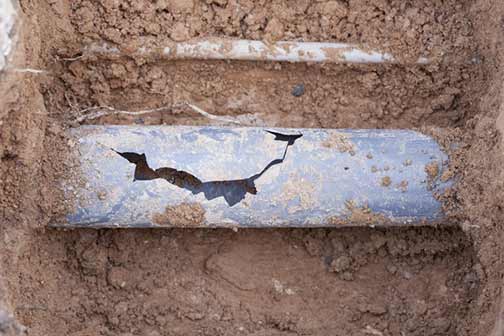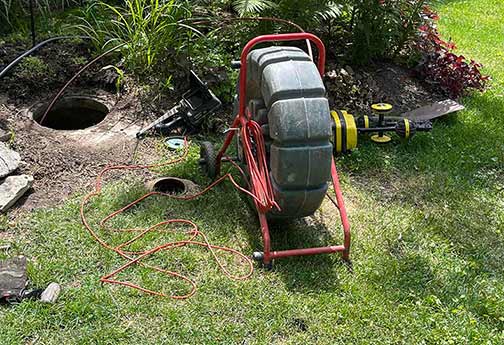
Sewer line problems in homes come in different flavors. These issues can have a wide range of causes, from aging pipes to mineral buildup, poor installation, and improper disposal of grease or other waste materials. Sewer line problems can also be mild, minor, or major, says Specialized Property Management Phoenix team.
Examples of common sewer line problems in homes include:
Clogs
This is the #1 problem in most homes’ sewer systems. Clogs happen mostly as a result of a buildup inside the pipes. Your sewer line is more likely to clog if fats, oils, and grease are flushed into the drain or if unflushable items are dumped into the toilet.
Tree root invasion
Tree roots can break into a sewer line and block it. Typically, tree roots merely exploit the existing leaks and weak joints in the sewer line. If tree root infiltration is not dealt with, it can result in clogs, leaks, or sewer line collapse.
Corrosion and decay
Sewer pipes made of iron and clay are more prone to corrosion and decay. However, other kinds of pipe materials can also suffer from these problems. Corrosion is a big problem in areas where the water is hard or the soil is acidic.
Pipe bellies
This happens when the soil underneath a sewer line section becomes unstable and gives way, causing that section of the sewer line to collapse. Water and debris will collect in this low spot, making the entire line more susceptible to clogs and leakages.
Weak and leaky joints
This is caused by aging pipes and poor installation. Ground movement can also weaken pipe joints, causing them to leak. Leaky joints in your sewer line will encourage tree root infiltration, leaks, clogs, and a host of issues.
Cracked sewer line
Shifting soil, repeated freezing and thawing of the sewer line, and heavy loads above the location of the sewer line can cause the pipes to crack. Sometimes, instead of cracking, your sewer line will develop tiny holes and breaks.

How sewer line problems are detected
If you think your sewer line is damaged, how do you determine the kind of damage, the location of the problem, the probable causes of the damage, and the extent of the issues? There are two steps involved when diagnosing sewer line problems.
Visual inspection
Visual inspections give the plumber a general idea of where the problems in the sewer system are. They help to narrow down the likely issues in the line. But visual inspections do not provide accurate information on the problems in the sewer system.
Sewer camera inspections
A sewer camera inspection allows diagnosis of sewer line problems with almost 100% accuracy. This method not only reveals the issues in the line it also provides the geographical coordinates of the problem, for easier resolution.
How to fix minor damage in your sewer line
If after inspecting the sewer line, the problems are found to be minor, how do you fix them? Minor problems like small leaks or cracks do not require you to replace your sewer line. In most cases, these problems can be solved using trenchless repair methods.
Trenchless sewer line repair is are innovative method for repairing damaged underground sewer lines. They don’t require you to dig up the damaged pipe in order to replace it. Because they cause minimal damage to your landscaping, they are known as non-invasive repair methods.
The most common types of trenchless pipe repair methods are pipe lining, epoxy injection, and pipe bursting.
Pipe lining or Cured-In-Place Pipe (CIPP)
A resin-impregnated tubing is inserted into the damaged sewer line. This is then inflated to press the layer of resin into the existing pipe. The resin is then left in place to harden and bond with the sewer pipe. This effectively seals the cracks and leaks in the sewer line, restoring its structural stability.
Epoxy injection
To fix minor cracks in a sewer line, liquid epoxy resin is injected into the damaged area. This low-viscosity fluid is introduced into the sewer line via access points created for the injection equipment. Once in place, the epoxy is allowed to cure and harden, restoring the function and durability of the sewer line.
Pipe bursting
This method is for replacing relatively larger sections of damaged sewer lines. A hydraulic machine pulls a cone-shaped head through the sewer line to break up the existing pipe. At the same time, a new pipe, attached to the other end of the line, is pulled in to replace the displaced line. This new line completely replaces the old one.
Which repair method is right for your sewer line issues? That depends on the details of the problem. The main benefits of trenchless repair methods are speed, minimal disruption to your lifestyle and landscaping, and affordability.
However, if trenchless sewer repair is done by an unqualified or inexperienced person, it can complicate your sewer line issues. This is why, before hiring a plumber to do trenchless sewer line repair in your home, you want to be sure they know their job.

